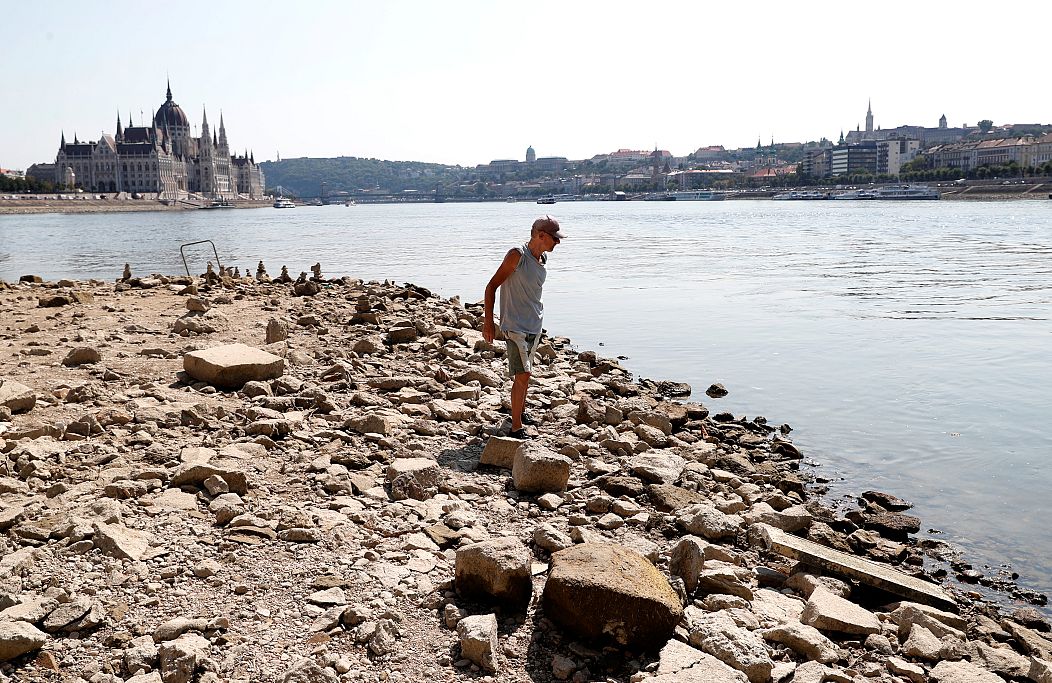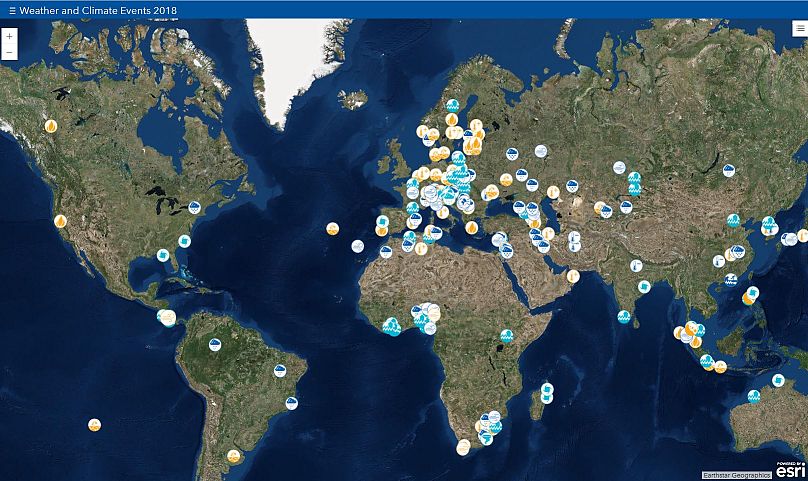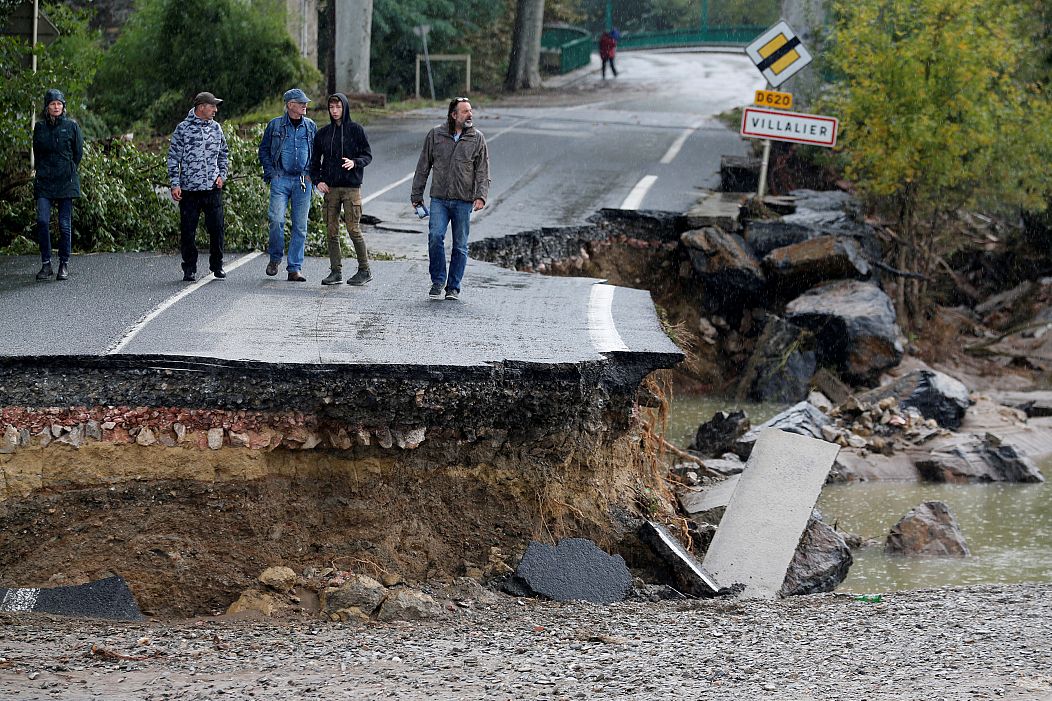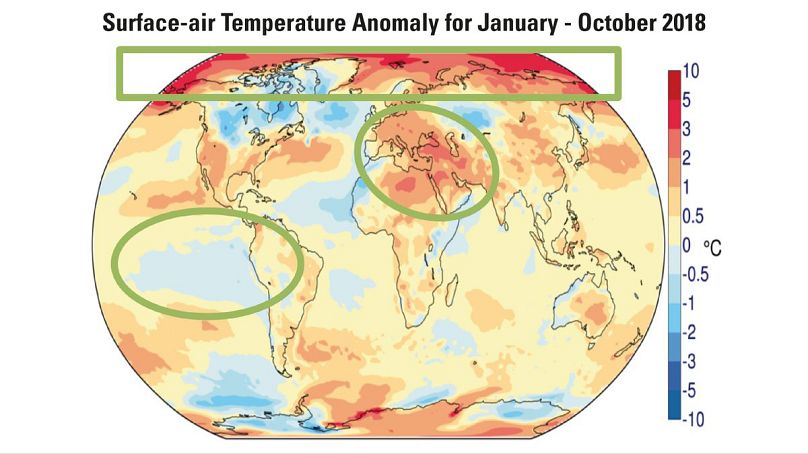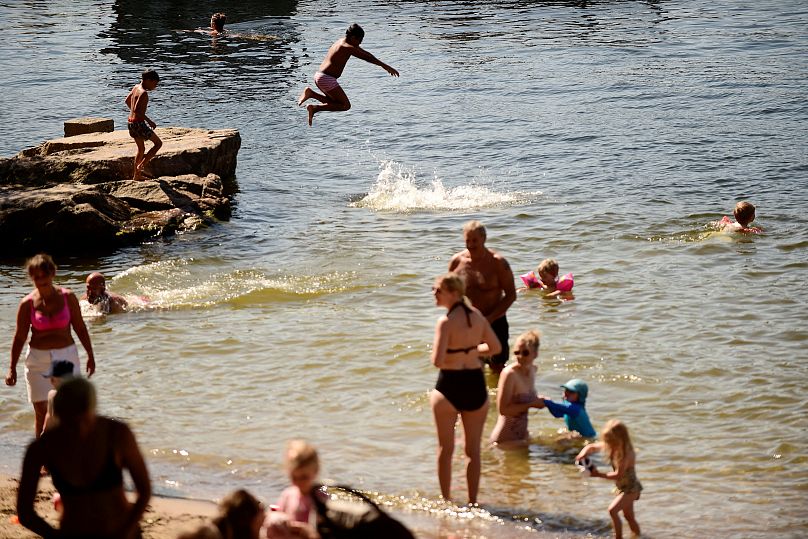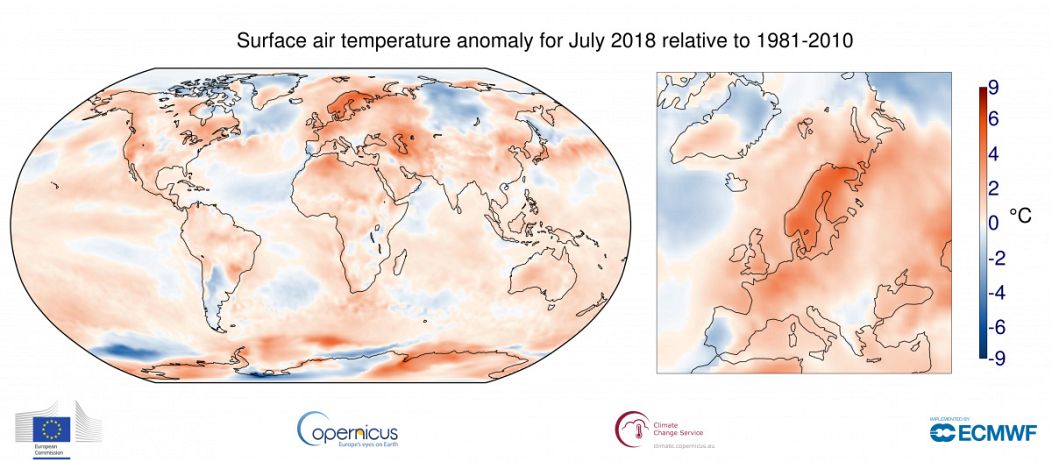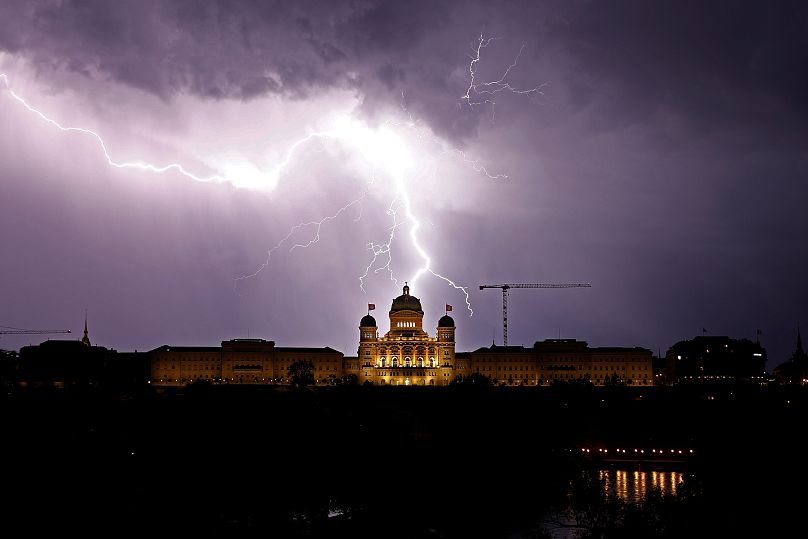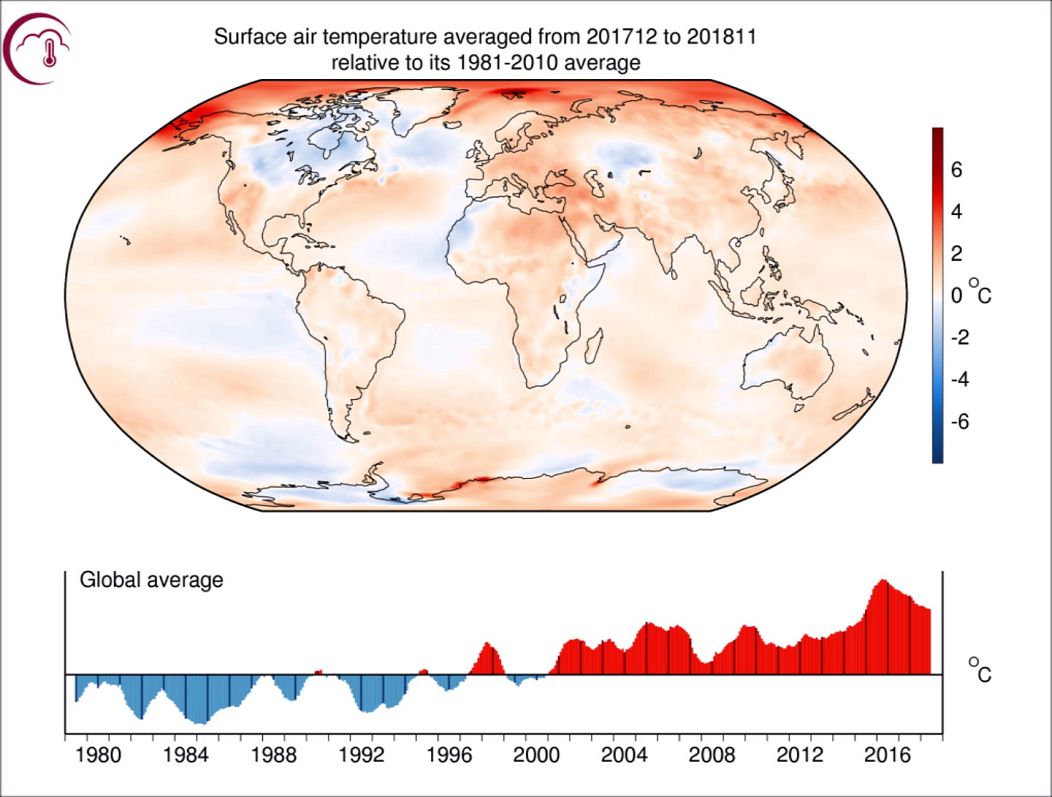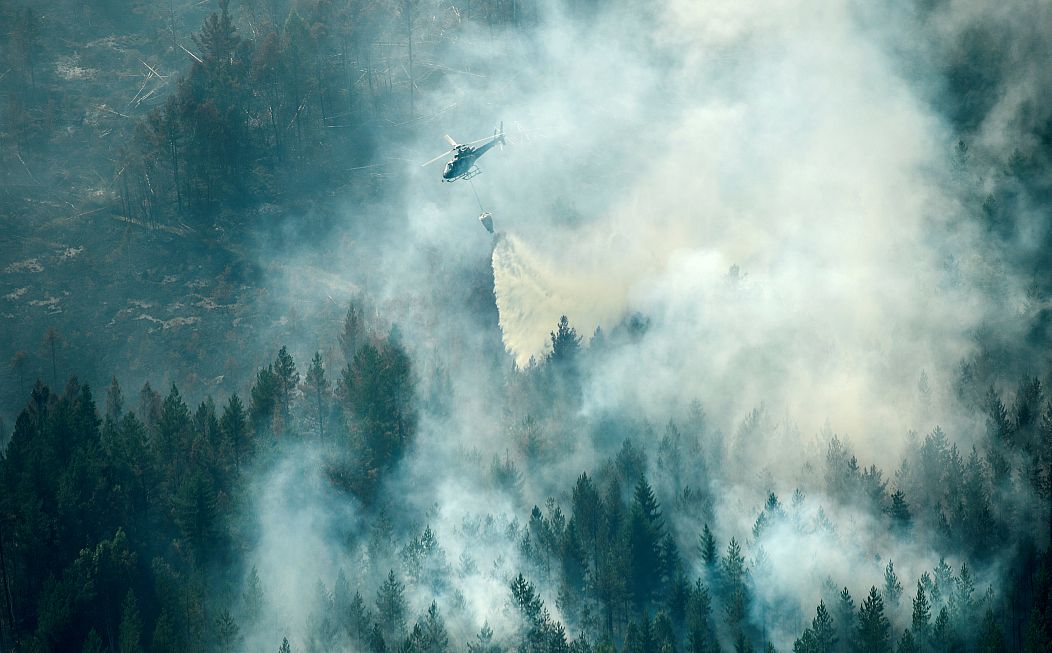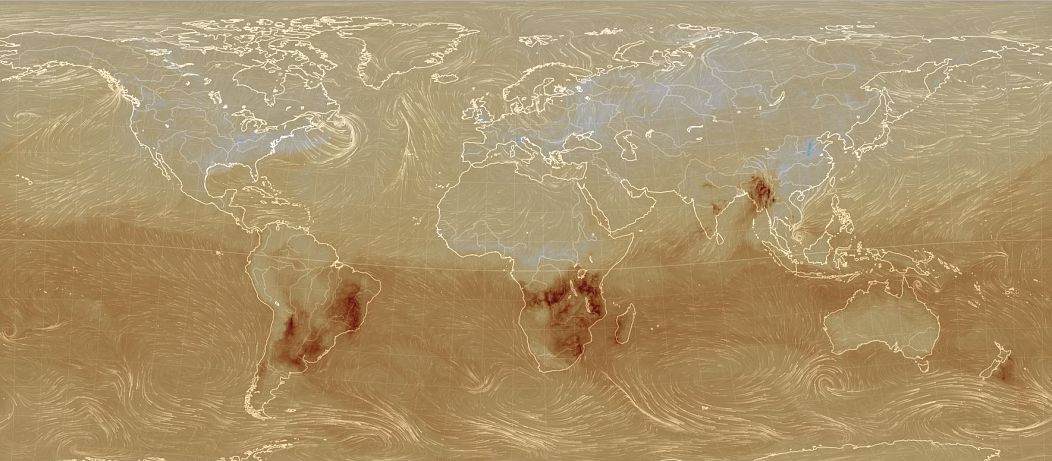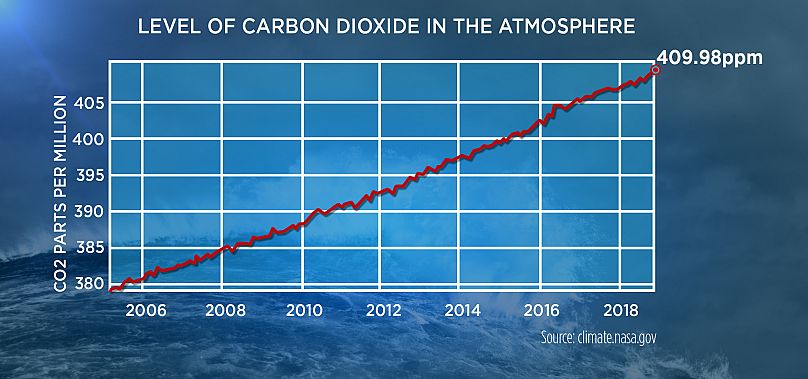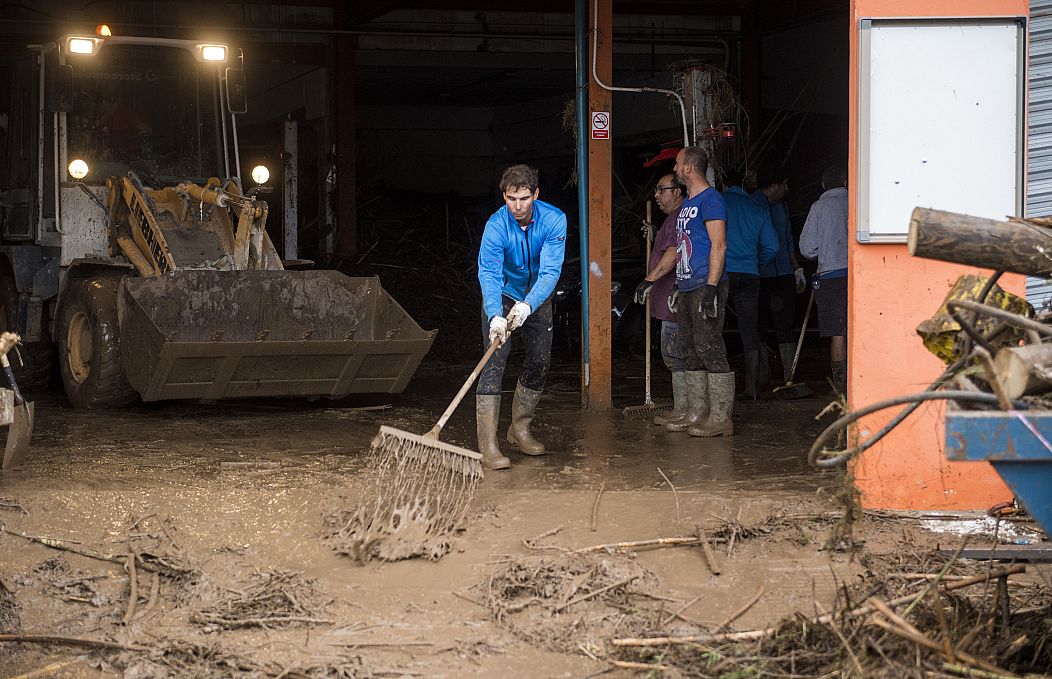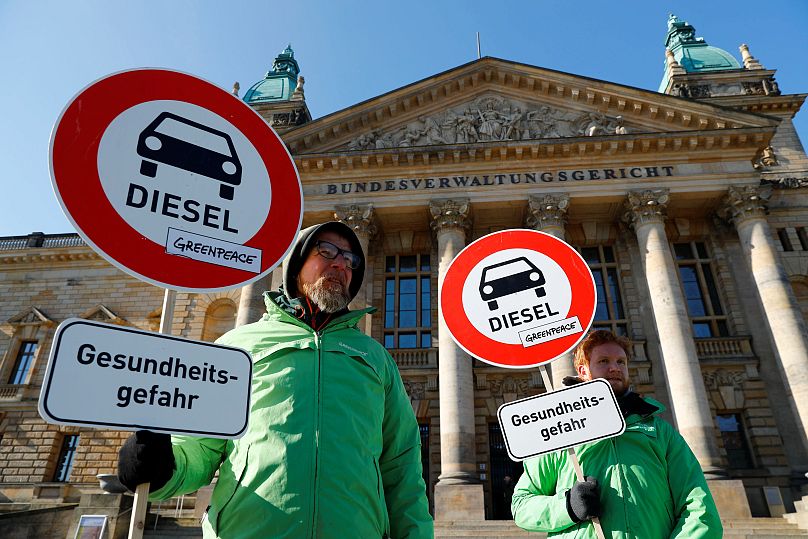Europe's chaotic weather in 2018 is wake-up call for climate change
A look back at the exceptional weather events that hit Europe during 2018 and if climate change can explain it.
2018 most 'extreme year' for unusual weather events in Europe
Record heat and precipitation recorded across the continent
We're the 'last generation to act against climate change,' global organisation warns
Scientists urge global temperature should not rise 1.5C above pre-industrial levels
Europe was one continent that experienced abnormal weather during 2018. After a couple months of extremely cold weather, heat and drought through spring and summer meant temperatures were well above average in much of the northern and western areas.
2018, a year of weather extremes
Between May and July, Scandinavia had the driest and warmest period on record.
The highest temperatures ever were recorded in the Arctic Circle. In Helsinki-Vantaa Finland, figures how record long runs of warm temperatures. There were 25 consecutive days of heat above 25ºC.
It was exceptionally warm in the United Kingdom and Ireland too and wildfires swept through Sweden burning up 25,000 hectares of land.
Greece experience its deadliest fire season in a decade, and in september experienced a rare 'Medicane', a Mediterranean “Hurricane”.
Budapest saw its iconic Danube river drying.
Portugal had its hottest day of the 21st century at 44ºC and Armenia had its warmest July since records began. Temperatures in capital Yerevan reached 43.7ºC.
Dry conditions persisted in Germany, where the April to September period was the second driest on record. Frankfurt sweltered in 19 consecutive days of heat above 30ºC from 23 July to 9 August.
In February, Estonia experienced its second coldest period and abnormal amounts of snow-covered southern France with falls of 15 to 30 cm in Nimes and Montpellier.
Record snow fell in southern Italy, especially in Naples.
May and June was marked by exceptional rainfall and thunderstorms.
In October, an intense low-pressure weather system in the Mediterranean Sea brought deadly flooding and high winds to several countries.
Italy was hit with gusts reaching 179 kmh at Monte Cimone.
The system sparked heavy rainfall, with 24-hour totals up to 406 mm in the northeast alpine foothills and 308 mm in Liguria. At least 30 people died in incidents associated with the October storm. At least 10 people died in Southern France, and there was a similar number of victims in Mallorca.
End of September heavy rains killed at least 8 people in Southern Spain regions of Málaga, Murcia and Almería.
Was 2018 a turning point for the climate?
So how does 2018 compare to previous years? We have seen, and often experience many exceptional weather events: but the weather and the climate are two different things. Is this the unequivocal sign that the climate has changed?
Is there a way to turn back or do we have to get used to living with colder winters, heatwaves and flooding, depending on where we live? Is this the worst year so far?
"It was a bit of a wake-up call," said Professor Sonia Seneviratne, of the ETH Zurich Institute for Atmospheric and Climate Science, who in her work analyses climate extremes.
"In other years there have been extreme events but maybe what was different this year is that it was really affecting Europe, the United States" she said**.**
Dr Friederike Otto, the acting director of the Environmental Change Institute at the University of Oxford in Britain, researches extreme weather events such as droughts, heat waves and heavy rainfall.
“I think in Europe, at least this year has brought home that climate change is actually something that is happening now and here in our backyard,” she said.
“We’ve seen that it’s not something that is a concern in the future and for people in developing countries only.”
Last year was the fourth warmest year on record together with 2015, 2016 and 2017, according to the World Meteorological Organisation.
“It (2018) was another year where the impact of climate change on the climate and the weather was really obvious," Otto said.
Then the 2018 climate is the new normal?
But was the year unusual, when compared with recent years? Not for Otto, who also works with the IPCC, Intergovernmental Panel on Climate Change.
"It's not unusual given that we are living in a world where climate change exists and already has an impact," she said.
"We found in our study on the heatwaves in Europe that parts like Dublin, Denmark and Oslo - it was not such a rare event as it can occur every seven years. But in the far north, in areas like Finland, it is very rare. The very high temperature was exceptional even in a climate change world."
"What we have seen in 2018 and in summer especially it's exceptional. Where many places where we expect heatwaves to happen more, it has actually happened. It would have felt very extreme if we didn't have climate change. But given that we are living in a world which is already one degree warmer than pre-industrial temperatures. It's extreme."
For senior climate scientist Freja Vamborg of the European Centre for Medium-Range Weather Forecasts (ECMWF), it's more complicated.
"Well, it’s very difficult to say. Because if we look at this year, in general, it has been very warm in all of Europe apart from February and March," Vamborg said.
"For me what’s more striking is not the intensity of a single event, or the number of extreme events it’s kind of the persistent pattern across almost the whole year" she said.
“It has been an extreme year in many ways but it’s difficult to say has it been more extreme? Certain things have been more extreme, like certain things have been more extreme than we’ve seen before. The temperatures in Europe are going to be one of the warmest on record if not the warmest” she adds, warning that the climate change is dramatic in the Arctic, where "we are seeing a new era".
Prof Seneviratne thinks that what makes 2018 especially exceptional is how many weather events took place at the same time over a widespread area.
While 2018 was not the warmest year, for Seneviratne it was the most extreme.
“In my opinion, it was the most extreme year,” she said.
“We haven’t had so many extreme events before. It’s a combination of global warming and additionally some unusual and very persistent weather patterns.”
Seneviratne says that if these weather patterns existed under cooler conditions, before global warming, it's possible we would not have experienced so many extreme weather events in one year.
“Because we wouldn’t have the background warming. So the occurrence of these extreme events was the combination of this very strong warming and also unusual weather patterns.”
The year of climate change warnings
The United Nations
The United Nations issued an alert in 2018 that the world has 12 years to prevent a climate catastrophe, in a report by the world's leading climate scientists.
The authors of the landmark report by the UN Intergovernmental Panel on Climate Change (IPCC) warned that global warming should be kept to 1.5C above pre-industrial levels to decrease the risk of drought, floods and extreme heat.
Prof Seneviratne was one of the lead authors of the IPCC Special Report on Global Warming of 1.5°C.
"At the moment we continue to have emissions of CO2 in the atmosphere and other greenhouse gasses which means that we are going to continue to have additional warming compared to today," she told Euronews.
"Now, the question is whether we can slow it down."
The IPCC, too optimistic?
In December, during the inconclusive COP 24 Climate Conference in Katowice, Poland, three scientists told us that the IPCC report was actually too optimistic, depicting global warming as a “speeding freight train” in the paper “Global warming will happen faster than we think”, published in Nature magazine.
The COP 24 a United Nations climate change conference and is part of the United Nations Framework Convention on Climate Change (UNFCCC) treaty. The UNFCC is made up of 197 nations and the European Union.
The article is also critical with the climate-science community for “struggling to offer useful answers”.
The World Meteorological Organisation
The WMO said in its November 2018 report that we are the last generation that can act against climate change.
"We are not well placed to achieve climate change objectives and stop the increase in temperature," says Petteri Taalas, secretary general of WMO.
"The concentrations of greenhouse gases are again at record levels, and, if the current trend continues, it is possible that the temperature will increase from 3 to 5°C by the end of the century."
"If we exploit all known fossil fuel resources, the increase in temperature will be considerably higher "explains Taalas at the beginning of the report.
"It is worth repeating once again that we are the first generation that fully understands climate change and the last generation that can do something about it," he added.
Are we heading for 3.3ºC global warming?
In December, the independent group Climate Action Tracker, warned that average world temperatures might be heading to 3.3ºC above the pre-industrial era levels, but also adding that there’s some hope thanks to the progress made since the Paris Conference when the world powers engaged to limit the global warming to 2ºC.
Time magazine's Editor Jeffrey Kluger tried to explain in October why we keep ignoring warnings. He said despite warnings from bodies such as the IPCC, "the public reaction - again, as always - has been meh."
Psychologists Kluger interviewed point to our "current comforts and conveniences" and claim we "discount the risk," if we think "consequences are far in the future."
The Mediterranean, one of the most affected regions
During the COP 24 a study by the Union for the Mediterranean organisation warned that climate change will be especially felt in the Mediterranean region, with warmer temperatures, water scarcity (despite the Autumn flooding episodes) and droughts expected to affect tourism.
"The region faces unequal distribution of resources, social instability, conflict and migration.
In addition to these social factors, the Mediterranean Basin is naturally exposed to a number of hazards, including earthquakes, volcano eruptions, floods, fires or droughts" it reads.
What is the state of global warming now?
So how can the weather be explained by climate change?
Otto explains the two mechanisms by which climate change affects the weather.
The thermodynamic effect is a result of extreme greenhouse gasses in the atmosphere. This causes higher temperatures and because of the rise, there is more water vapour in the atmosphere. The vapour turns to liquid and falls as rain.
The second is the dynamic effect which is different depending on the season and the place in the world, Otto said. It is a result of the change in the atmosphere with more greenhouse gas and water. This affects atmospheric circulation.
"These two together determine how climate change affects weather systems," Otto said.
The thermal dynamic effect is the same globally. The dynamic effect can work in the same direction as the thermodynamic effect. It can increase the risk of extreme rainfall, more low-pressure systems.
But both effects can also cancel each other out. And to find out what's happening, scientists dedicate studies to a particular event.
Otto and her team studied heatwaves in northern Europe this summer and looked at different locations in that area and found that in some places, the risk of extreme heat doubled and increased five-fold in others.
The planet's one-degree rise since pre-industrial times is blamed by experts on a rise in greenhouse gasses.
"We know that with increased greenhouse gasses in the atmosphere we have more absorption of long-wave radiation. So with a warmer atmosphere, we have a higher global mean temperature and higher local temperatures, so the risk of heat waves increases.
A warmer atmosphere holds more water vapour and the water turns into liquid water and falls out as rain.
New record in carbon emissions
In October the Intergovernmental Panel on Climate Change (IPCC) urged authorities to take “unprecedented measures” to avoid “unthinkable damage to the climate system”.
The international scientist's team said that much more needs to be done to keep the global average temperature below 1.5ºC compared to pre-industrial levels. The threshold could happen between 2030 and 2052.
To stay below 1.5°C, the IPCC concludes the world must embark on a World War II-level effort to transition away from fossil fuels, and also start removing carbon dioxide from the atmosphere at large scales – anywhere from. To cut carbon pollution as much as possible, as fast as possible.
The report also details the effects of a 1.5ºC temperatures rise compared to a 2ºC rise. Keeping the 1.5C target would keep the global sea level rise 0.1 metres (3.9 inches) lower by 2100 than a 2C target, according to the IPCC.
That could reduce flooding and give the people that inhabit the world's coasts, islands and river deltas time to adapt to climate change.
Scientists say a 1.5ºC rise will mean that the climate is kept at a level we can manage and in a way that we have been.
Instead, 2018 marked a new record in carbon emissions.
The sceptics
President Donald Trump of the US has cast doubt on warnings of the effects of climate change.
He accused climate change scientists of having a political agenda and said he was unconvinced that humans were responsible for rising temperatures.
And after taking office Trump announced the US withdrawal from the Paris climate change agreement, in which 187 countries committed to keeping rising temperatures below 2C above pre-industrial levels.
He has also recently dismissed a report by his own administration.
During his presidential campaign in 2016 Trump dismissed climate change as "a hoax".
But in a recent interview, he said, "I don't think it's a hoax, I think there's probably a difference."
Other critics claim the climate just goes through cycles naturally and changes over time.
"It's not wrong that climate change goes through cycles naturally," says Otto.
"But these cycles are usually triggered by changes in the incoming solar radiation. And we are not in a cycle where we should have very high the high temperatures," she said.
"And, and at the same time, we also know, just from very basic physics, that carbon dioxide is a greenhouse gas, and that it absorbs longwave radiation. And so if yes, people have a problem with basic physics, then it becomes really difficult to argue."
Is ther any hope? What can we do?
In November the World Meteorological Organisation came out with the grim reminder that “we are the last generation that can act against climate change”.
It was the warning of the UN meteorological service’s secretary general Petteri Taalas when he presented the Provisional Report on the Global Climate in 2018.
"I think we are definitely the last generation that can deal with climate change in a way that it is a problem that will not lead to a huge catastrophe in many parts of the world," Otto said.
"Because with one degree of what we have already and with 1.5 degrees, the impacts are so that with meaningful adaptations, they will still be manageable.
"But it's if temperatures rise much, much higher than that, then the impact will obviously also be much stronger" Otto added.
"And it will be, especially as always - for the vulnerable in every society it will be very hard to deal with. And so in that sense, we, are the last generation who can sort of keep it at a level that is manageable for the society in the way that we know society today."
In October a group of scientists stated once again: The human food system is a major driver of climate change.
They analysed a number of measures to reduce the environmental effects and had a clear message to the people, which they published in Nature: They promoted a shift to a flexitarian diet, where people eat more vegetables, more nuts and less red meat.
Stock farming or the clearing of entire rainforests for agriculture contribute direct and indirect to a third of the global greenhouse gas emissions.
They're not alone in coming with this warning.
But investing and finance is another area that is of concern for Otto.
"A lot of people have pensions," she said. "Demanding pensions funds don’t invest in carbon-driven industries like oil and gas companies and so on."
Vamborg says that a positive effect is that climate change awareness is rising all over the world.
But at the same time, the "Gilets Jaunes" protest started after the French Government tried to implement an environmental tax for fuels. Protesters say it's unfair to charge consumers when the transport, shipping industries are very lightly charged for their massive fuel consumption.
As it is a multifaceted and global problem, the actions must come from all sectors (industry, consumers, transports, waste management)... And from everyone, all over the world.
Also visit the C3S/Euronews climate updates with data provided by Europe’s Copernicus Climate Change Service (C3S) and the European Centre for Medium-Range Weather Forecasts (ECMRW) to put our weather in context.











